In part, the constructed garden is intended to portray an idealized version of nature. Though selected plants might be native to diverse areas of the planet, their combination intends to mimic textures and colors the gardener imagines from nature, but with preferred plants.
I was not exposed to gardening as a child, but have many wonderful memories of exploring nearby woodlands at a time when mothers were unconcerned when their rambunctious sons roamed for hours of the day. Many years later, my wife and I continue to explore (my mother is still not concerned), though for fewer hours as a concession to age. She enjoys the exercise, but also has become my spotter, identifying select flora that is blurred by my colorblindness. The native orchids, columbines, heucheras, mayapples, and others seen on nearby mountain trails are a significant influence in my shady garden.
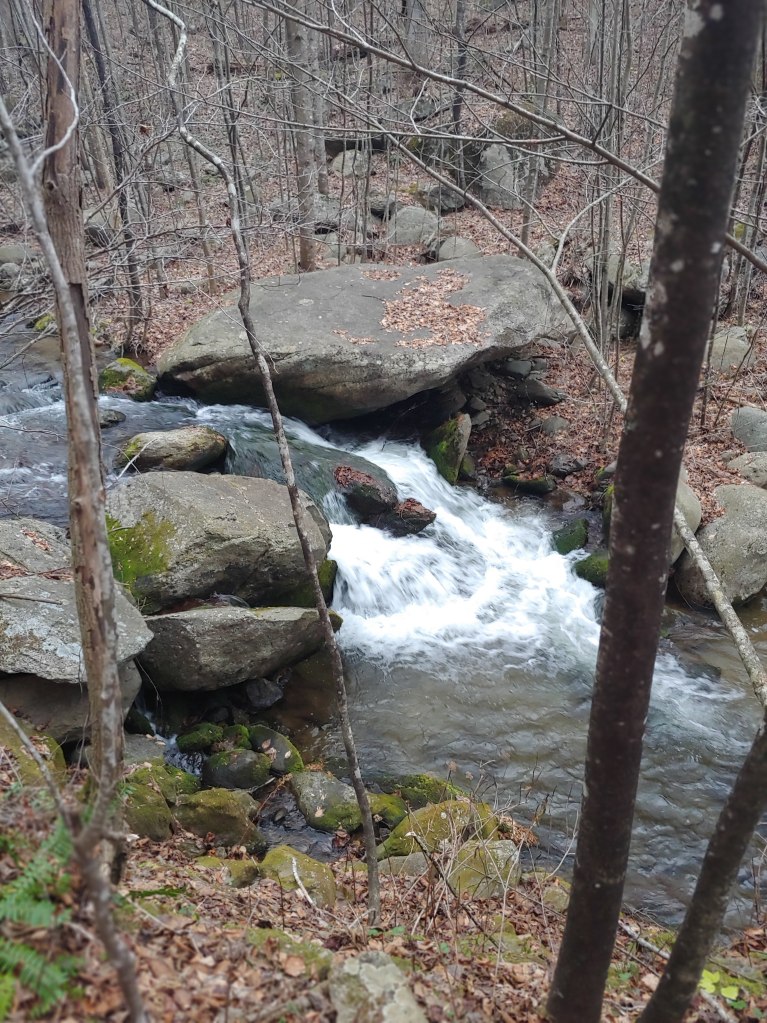
Our favored hikes are ranked by notable features, boulder lined rivers that rage from mountaintops, or by rocky protrusions that overlook valleys. Others are favored for their botanical treasures, trout lilies and trilliums, or this week, spotting native orchids that feature a single leaf protruding through the fallen leaves of the forest. These will flower in the spring, but now is the time to find them while there is less competition on the forest floor.
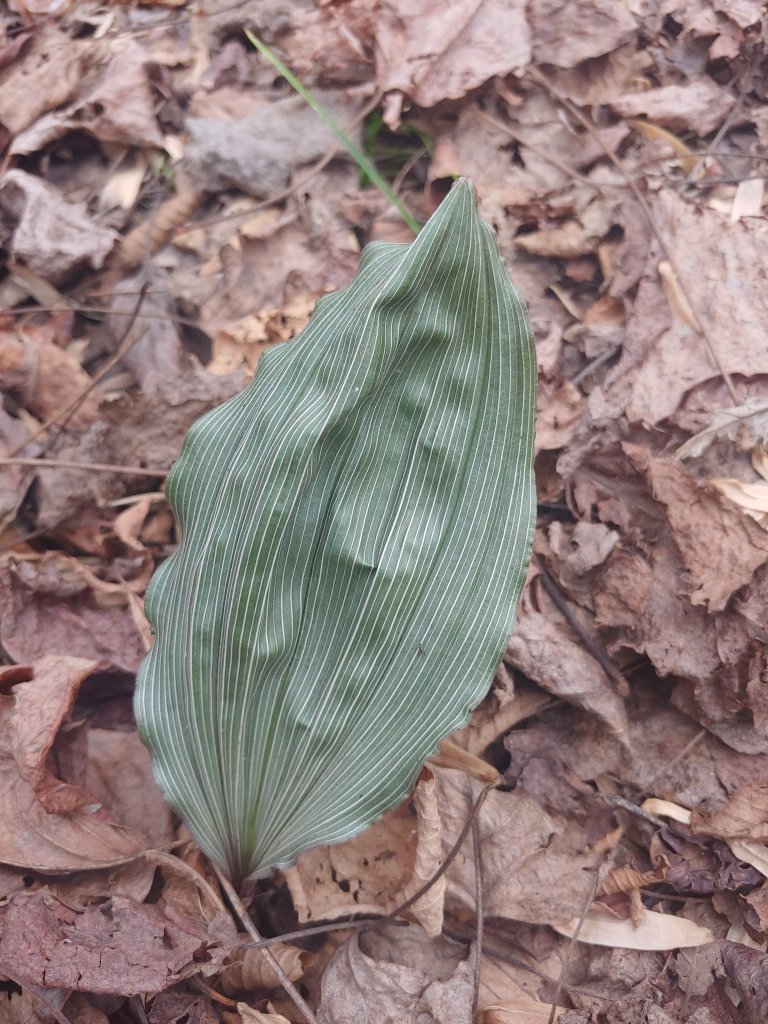
We first noticed Putty Root orchid (Aplectrum hyemale, above) with a silvery striped green leaf several years ago, and soon after the similar Cranefly orchid (Tipularia discolor, below), both with purple undersides of leaves. These were seen in unexpected quantities, along with abundant, evergreen Downy Rattlesnake plantains (Goodyera pubescens, below) while hiking along the Staunton River in late November.
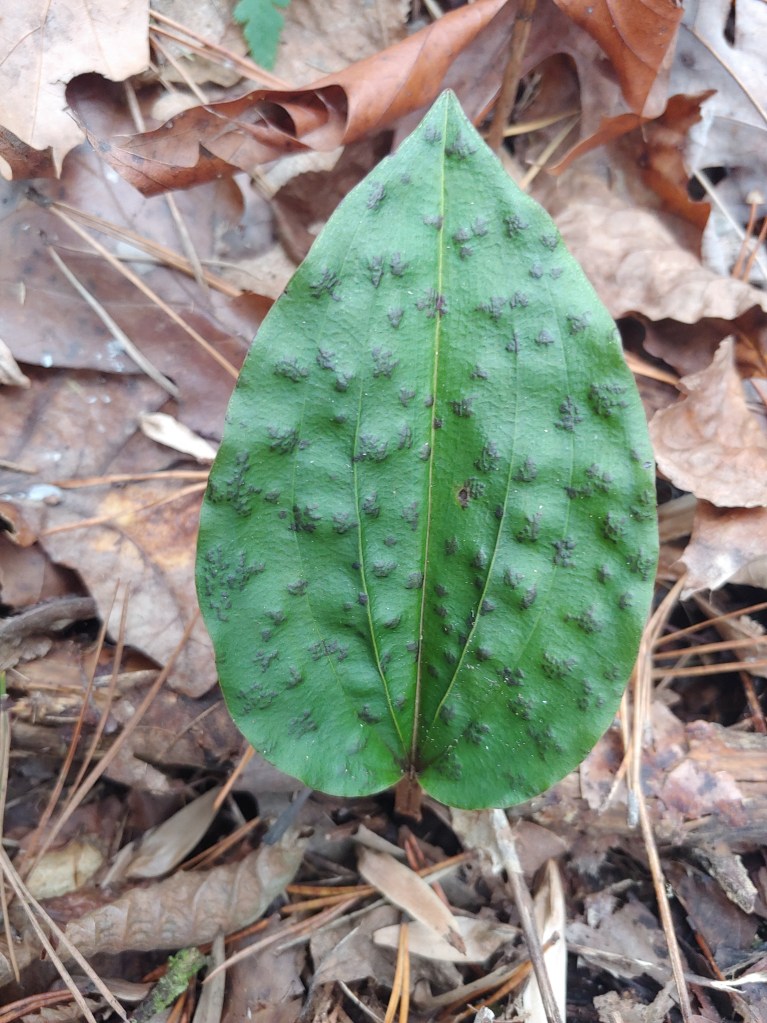
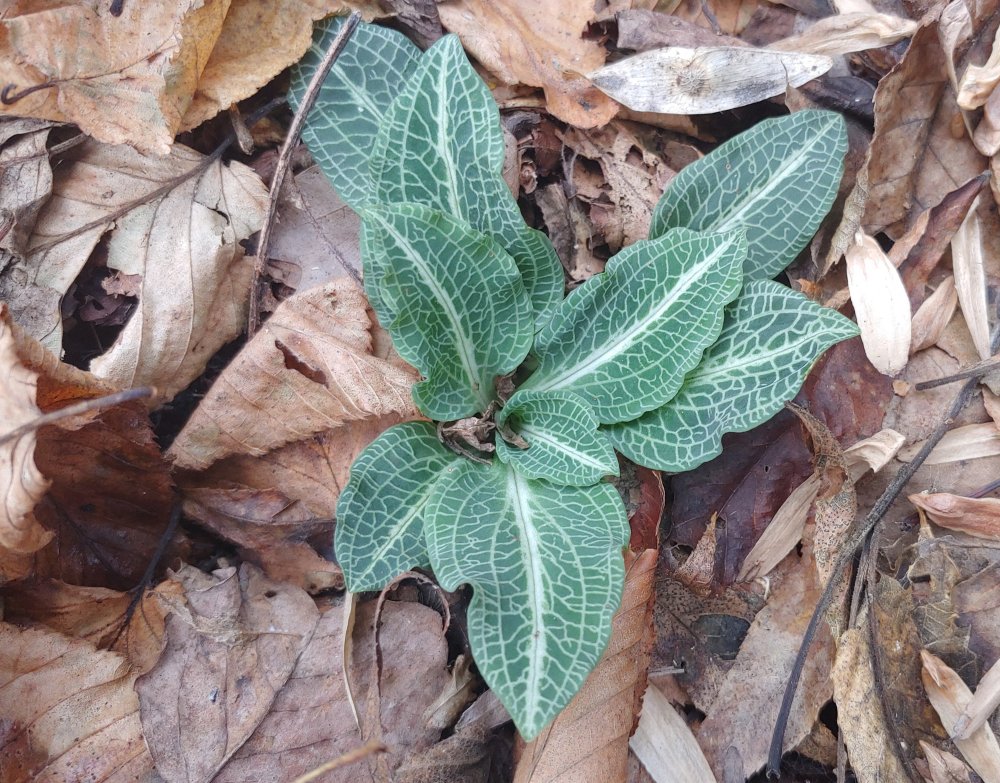
We were excited to discover Cranefly orchids with purple leaves top and bottom (below), the first we were aware of their existence. Their identity could not be researched until we returned to civilization (with cell phone signal), and this revealed that the purple leaves top and bottom are unusual, but not rare. With a river that tumbles over and between huge boulders, and a rocky overlook this is one of our favorite hikes, but now we’ll be on the lookout for orchids in autumn and spring in this botanical treasure land.
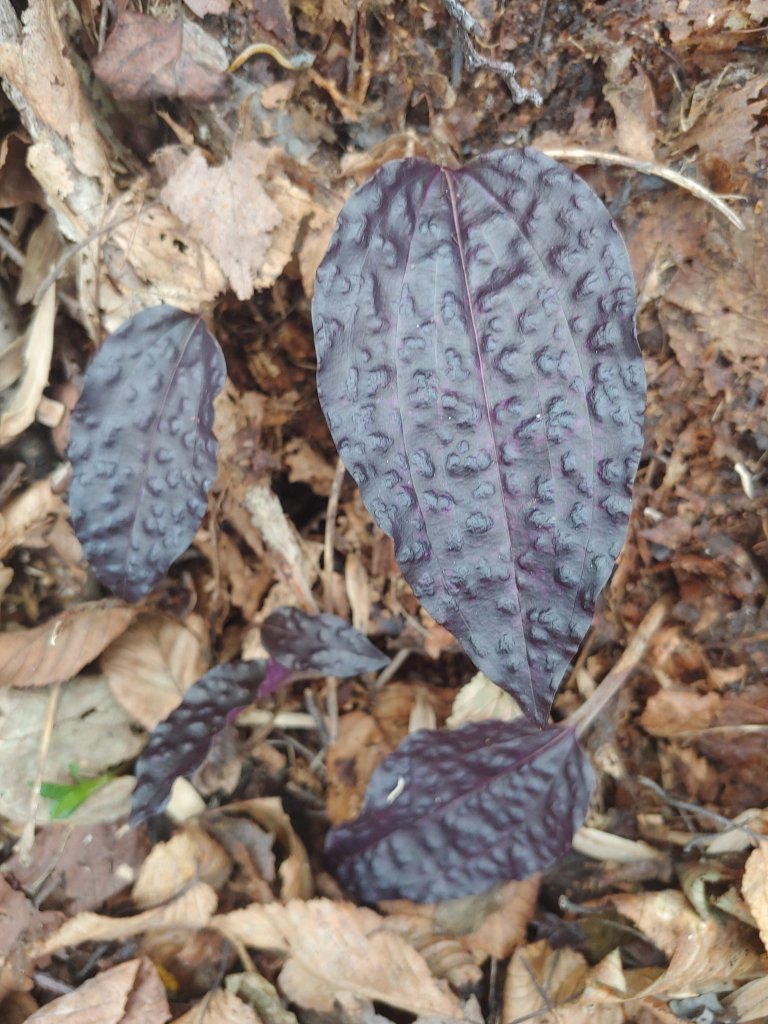
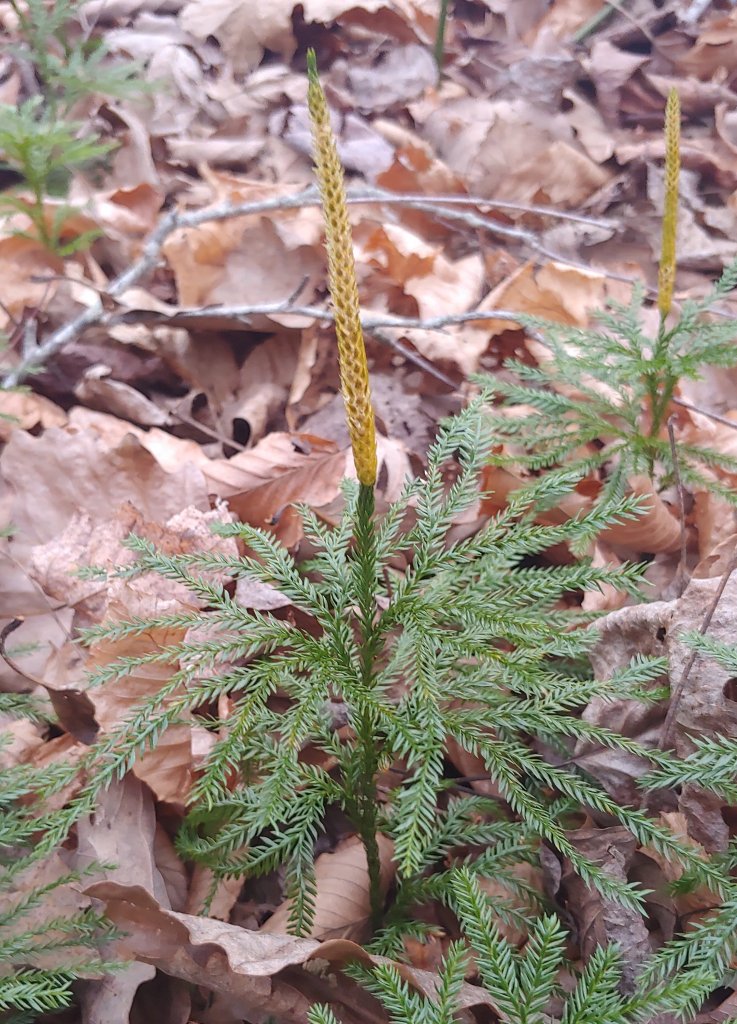
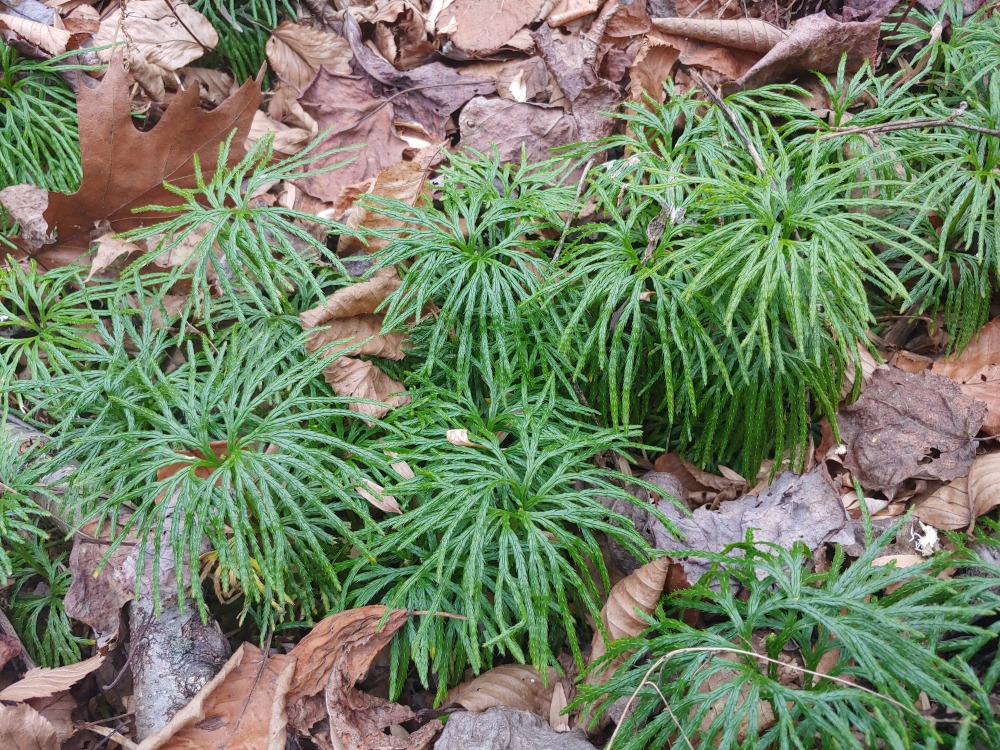
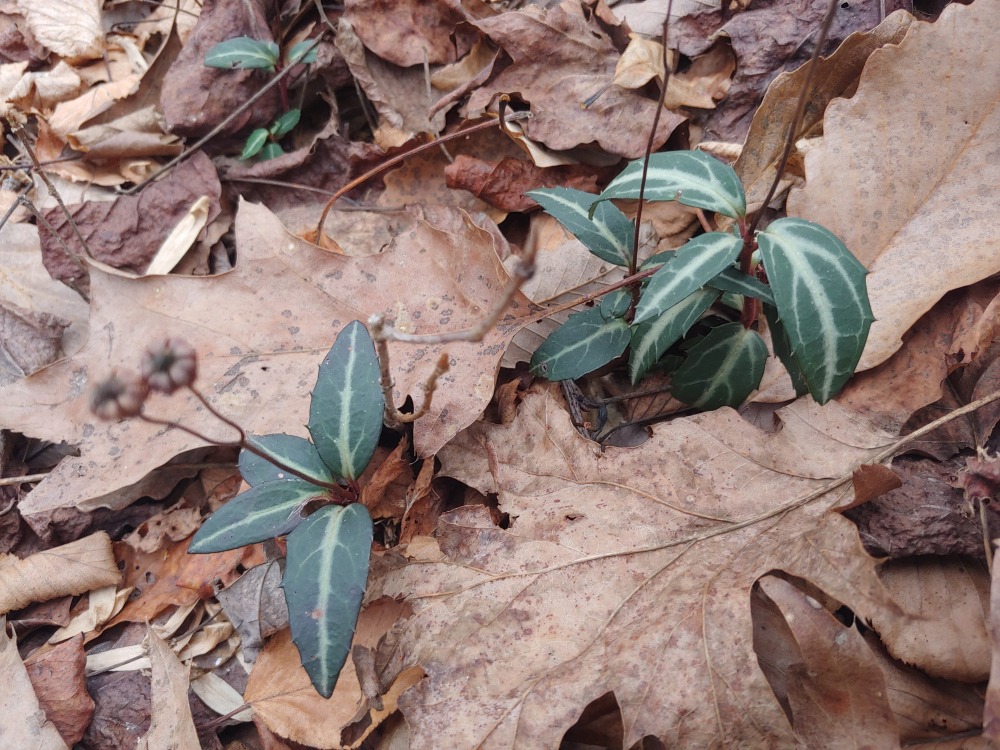
Nice article! I used to live in VA and have not seen most of them since I left. A pleasant “walk” in the woods.
I so enjoy your posts and this one was great! Loved the hughe bouldders along the river,
Every time we hike this trail I’m tempted to retire to a mountain cabin, but only if it can be on a river with a view of the valley.
We have a colony of “Spotted Wintergreen” (aka Pipsissewa) spreading under the White pines that line our driveway. They’re adorable little things, especially when they send out their cute little blooms.
I’ve planted small numbers of several of these natives with mixed success. They are very specific in their requirements.
We “inherited” these when we bought the property 24 years ago, & I imagine they are the wild/native type as I doubt anyone planted them. They seem to really like the shade, soft soil, & deep pine needle mulch under the White pines.
Ground pines and ground cedars are . . . weird.
I agree. And then to discover these are club mosses, a complete new world outside the plant kingdom.
Yes, that makes them even . . . weirder. Large sorts do not live here, and that makes them sort of compelling.